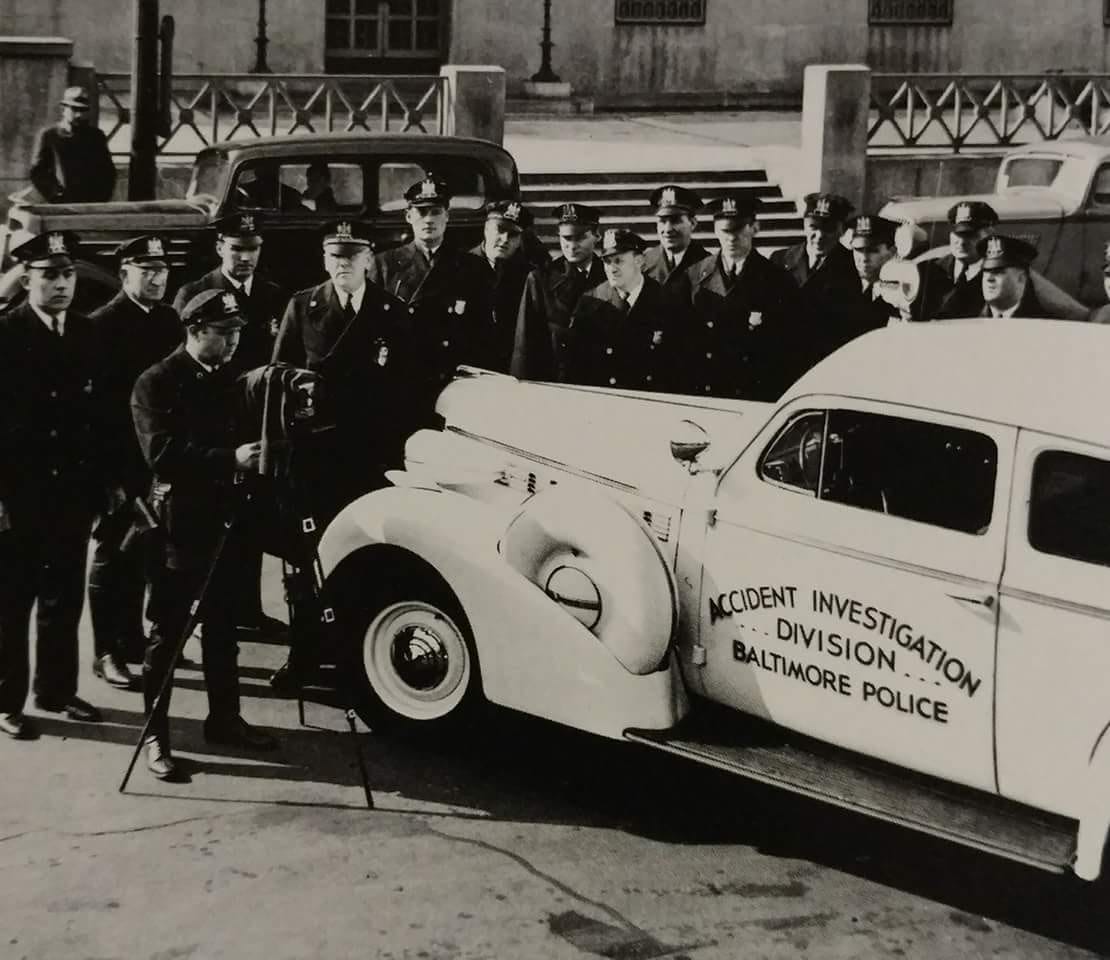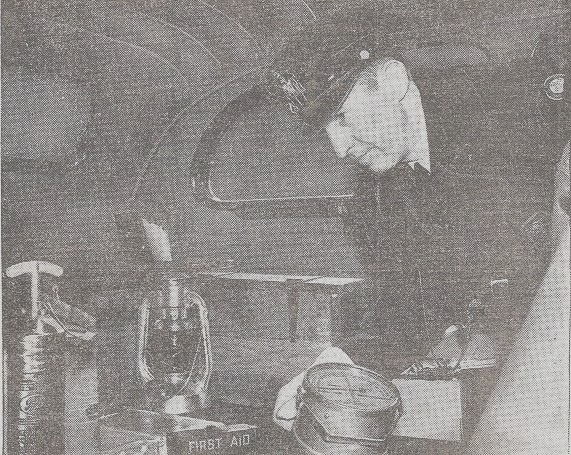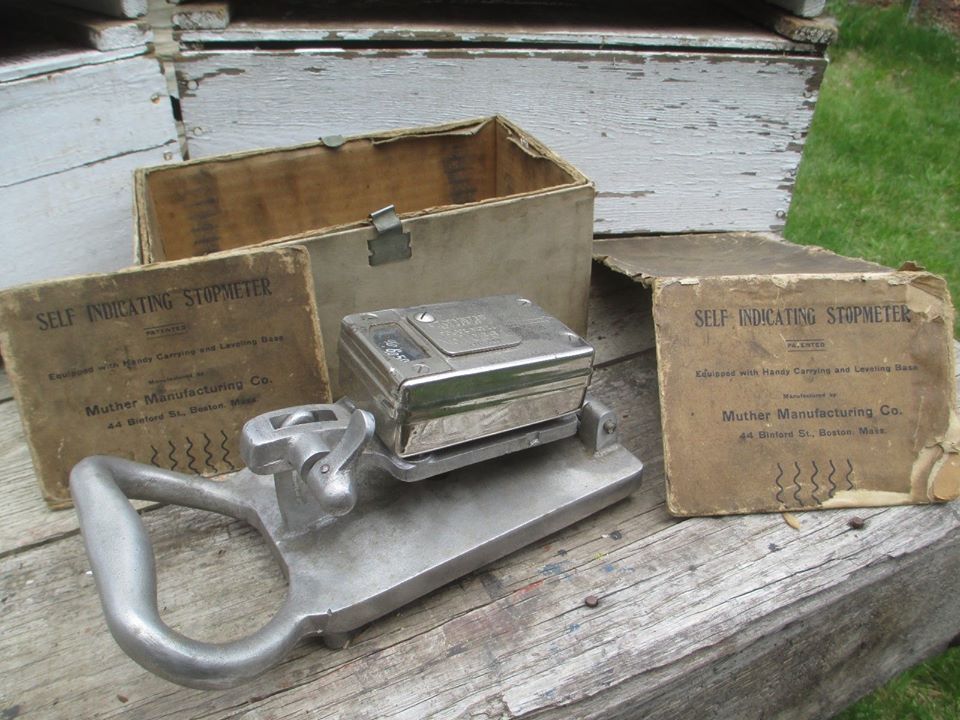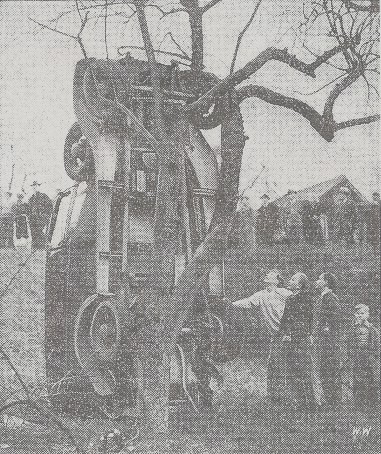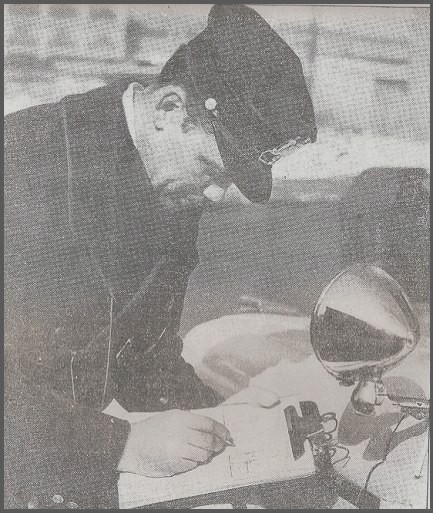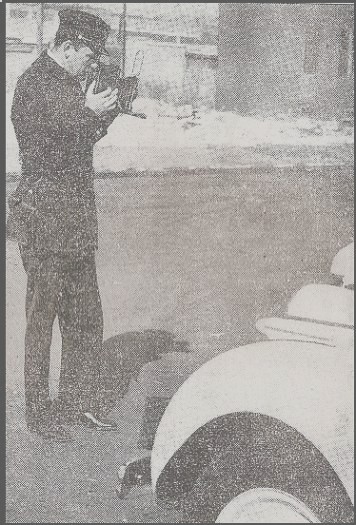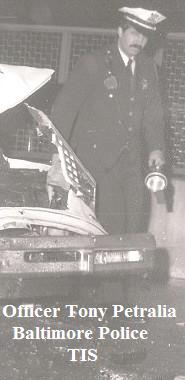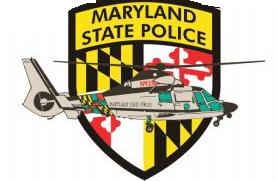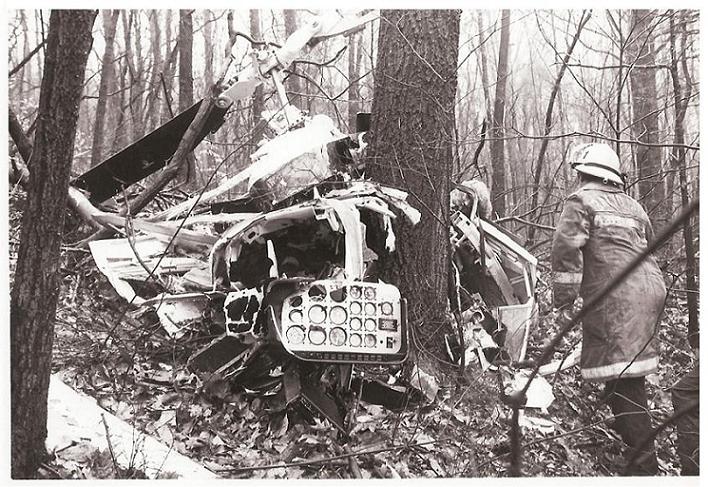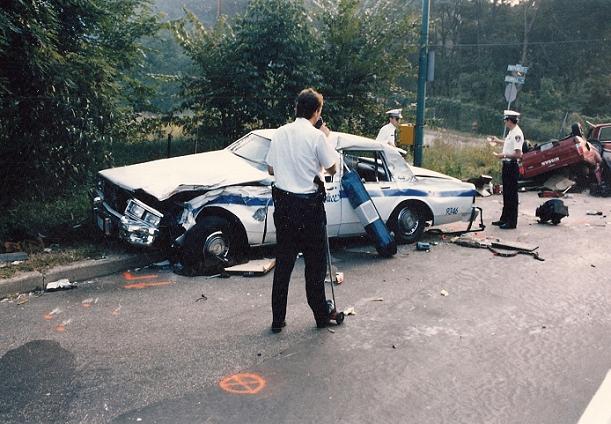ACCIDENT DETECTIVES
April 4, 1938
Finding the "why" of automobile accidents before the inauguration of the Accident Investigation Bureau of the Baltimore Police Department was a guesswork proposition. But, in the two months that the three "crash cars", of that division still white and shiny have been on the streets, finding the mathematics, chemistry, and biochemistry, taken on the dignity of science. Like as not, any member of the department in the course of his daily duties will make use of physics, mathematics, chemistry and biochemistry, psychology, medicine and human anatomy. For good measure, he'll throw in a smattering of law, engineering, and art.
Men Trained
In two Schools The men got their intensive and varied schooling at two schools at the University of Maryland and at police headquarters here under Sergeant Clarence O. Forrester, who now commands the bureau. It is that training which resulted in the squad's being commended for the thoroughness of their evidence by all three Traffic Court magistrates. For the men have more than merely a passing acquaintance with the science they use in their investigations. Under the subject of biochemistry, for instance, they have learned how to identify the types of human blood and saliva, and they know how to preserve specimens for further experiments. The officer in the crash car knows his mathematics-especially his trigonometry-and he uses it in determining the relative positions and paths of the vehicles involved in an accident after he has made his steel tape-measure readings. He uses a decelerometer to test the brakes of cars in a crash, and with its readings along with his mathematical, calculations, his knowledge of the laws of moving bodies, of negative acceleration, of force and of gravity, the officer can often reconstruct the accident without even asking any information of the drivers of the vehicles. Psychology helps the men to more easily approach drivers and witnesses-etiquette enters, too-and the officers know the rudiments of human anatomy, as taught to them by a doctor and the different types of bone breaks and of injuries in order that they may better administer first aid. Art and engineering enter with the diagramming of the accident. Moulage work-the making of impressions-is sometimes necessary to preserve tire tread marks in hit-run cases.
Knows Chemistry And Law
The investigating officer understands the physics that governs the working, of his camera and the chemistry used to develop pictures of accidents taken by himself. He knows a good deal of law in order to properly present his case in court, and he has been taught what is legal and what is illegal evidence. Besides this training, two members of the squad have bachelor's degrees, says Sergeant Forrester. And he concludes, "I could talk about the things my men studied all afternoon. It was an intensive training course-I didn't let up on them for even one minute. The sergeant himself expects to get a degree within a year. He attended Northwestern University traffic school in 1935 and again in 1937. This training resulted in a commendation on the thoroughness of the squad's evidence by the Traffic Court Magistrates William F. Laukaitis, William J. Stocksdale, and George Eckhard. With three cars at his command now, Sergeant Forrester hopes eventually to have ten. As it is, one car covers a beat extending from Pratt Street to North Avenue between Charles Street and Patterson Park Avenue, the second covers an equal area west of Charles Street and the third takes the territory north of North Avenue between the Belair road and Charles Street. The cars are sent off their beats when necessary and the police say they can be at the scene of an accident within three minutes. There are sixteen men in the division. they work eight-hour shifts day and night.
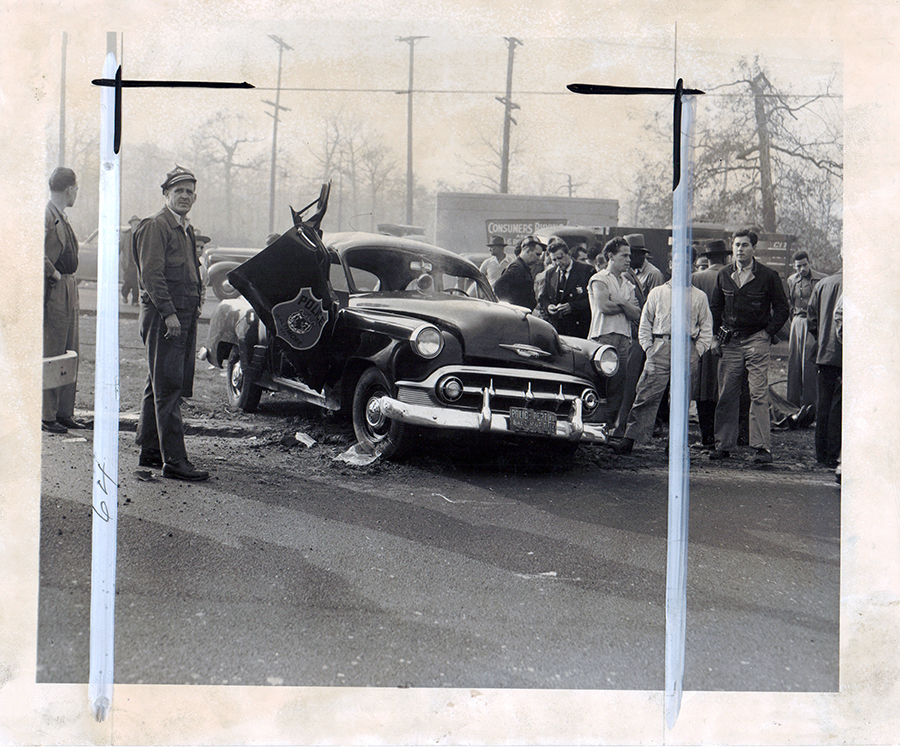
Baltimore Sun Collection
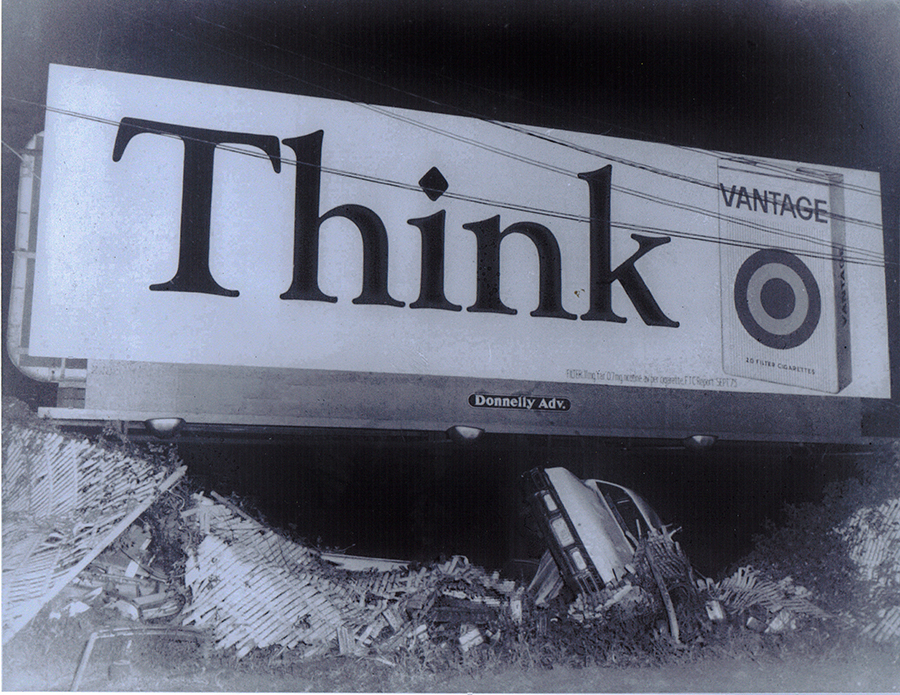
Baltimore Sun Collection
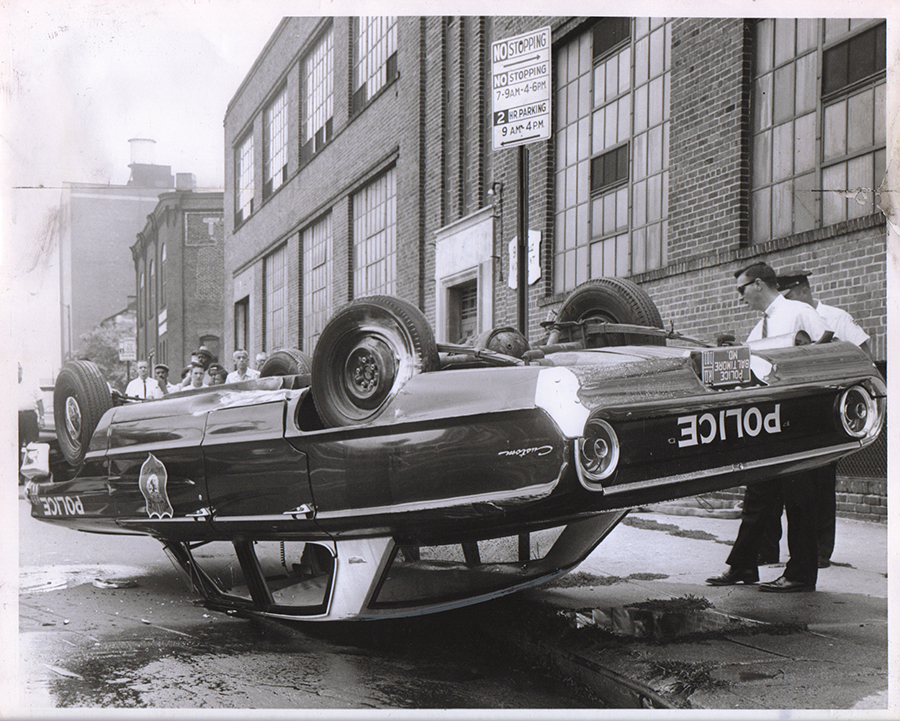
Baltimore Sun Collection
20 Sep 1938
31 START TRAFFIC COURSE FOR POLICE
A Staff Correspondent
The Sun (1837-1989); Sep 20, 1938; pg. 24
Picked men from three states enroll in classes and College Park
Test lectures fill first day’s session of two-week curriculum
College Park, Maryland, September 19 – with rain – worst roads and strikes holding down the attendance, and 31 picked policeman, including ten from Baltimore, assembled here today for two weeks of study on traffic congestion and accidents.
Seated at the University of Maryland School of art and culture Auditorium, just off the Washington Boulevard, please from three states and the District of Columbia pencils to them papers and took notes and lectures.
They heard W. L. Drawn, traffic engineer of the Baltimore Police Department, asserting that the hope of less city congestion lies in the judicious use of one-way streets.
No parking laws scouted
No parking laws will not eliminate loading and unloading, he said, and may even tend to reduce the city’s commerce. The expense of other methods is prohibitive, he added.
Kirk A. Keegan, of the National Safety Council, Chicago, told the policeman that solution of the problem of the “accident – prone driver” is a major factor in reducing accidents. The car and the highway cause only 20% of the accidents, he declared.
As members of the University’s traffic officers training school, conducted by the school of engineering, the students had been chosen by the police departments to master the three “E’s” of traffic control – education, enforcement, and engineering – with a view to reducing accidents in their communities.
Browse are wrinkled
Browse was often wrinkled during the first days' session. A police sergeant from Washington cast a perplexed I and a neighbor from Greenwich Connecticut, during the explanation of medical friction; the 100 questions adaptability test caused many puzzled expressions.
Just as often a good-natured just brought laughter to all commerce, as when notes were compared revealing opposite interpretations of the teachers remarked.
With all many problems were discussed, everyone weathered the examination, and all were receptive to five hours of lectures on the functions of a good traffic officer and the value of the records that take so much time and patience to make it.
Strike Detains Students
Of the 31 in attendance, several from Washington, two from to get, one from Delaware and the remainder from various parts of Marilyn. A contingent from Wilmington Delaware was unable to come because of a truck driver strike.
Dr. S. S. Steinberg, Dean of the engineering school, welcomed the men cited that 3000 persons are injured or killed daily traffic accidents and congratulated Sgt. Clarence Forrester, head of the Baltimore accident investigation division, for the manner in which he had organized the course.
Inspector Stephen G. Nelson, the acting Police Commissioner of Baltimore, was unable to appear and was represented by Capt. Henry C Kasie, head of the traffic division.
Work is reviewed
Capt. Kasie studied the history of his unit (Traffic) from its founding in 1905. When the men carried canes to guide traffic, the days when the traffic division was heralded as the “Beauty Squad” because of the requisite six-foot height of its members to the present day [1938], when there are 239 men. Major E. F. Munshower, the superintendent of the Maryland State Police, whose department has five students in the course, spoke of the necessity for strict attention and, of the responsibility placed on those attending.
School officially began when Sgt. Forrester took the chair. He cautioned the men not to oversleep in the morning, and to take notes without assistance and, on their own, words.
“Exams during the course,” he said, “will not be judged on your handwriting.” This brought smiles all around. “But I don’t want any of you to turn in papers with identical answers, and don’t fool me by jumbling the words around a bit.”
Before lunch Sgt. Forrester passed out the adaptability test, to be finished in 50 minutes. An anxious circle of large men surrounded him, “I’m alright and remembering things, but, kind of, poor at putting them on paper,” said one huge fella with a bald head.
Sample of questions
“There never was an exam that could jump up and bite a man, or kill him, or even knock them down.” The Sgt. reassured the class, “I just want your reasoning.”
The men began their papers. They found questions like “What causes lower taxi fares?” – With the discontinuance of streetcars, competition among taxies, goals forbidding the operation of large buses, conventions, and fares, etc. were no parking laws as the five possibilities for the correct answer.
Several of the men were finished the test in the allotted time in a few obtained 100%, marks. This was reported to be an unusual figure.
A Practical Picture
The Washington Boulevard separated the men from the In where lunch was served. In crossing, everyone became conscious of the great traffic problem as vehicles have skidded by. In front of the inn, the wrecking truck itself had been wrecked.
Mr. Braun spoke after a luncheon. He said the traffic control problem had become a reality with the advent of skyscrapers, having no provision for parking for office workers, and with a significant increase in the speed and number of automobiles.
Sgt. Martin D. Brubaker, head of the accident prevention Bureau of the Maryland state police, reopened the classroom sessions. He described as a good traffic officer as a man with a “please – your – employer” attitude toward the citizen and recommended Dale Carnegie to the police as a first step toward needed psychology.
Keegan Last Speaker
Mr. Keegan, the last speaker, sympathized with the pupils for the first-day ordeal of a lecture course. Many of them had been working late the night before in their police duties.
Speaking of the three “E’s” Mr. Keegan declared that they had made possible a 60% decrease in industrial accidents in the last 25 years. The same decrease with savings of more than 285,000 lives, could be made in traffic accidents, he said.
“There is plenty to be done in the two weeks,” said Sgt. Forrester.
“You’ll need plenty of midnight oil.”
First-aid – and remarking that a knowledge of simple first-aid was a necessity to the traffic officer. Sgt. Brubaker told of an accident near Baltimore three weeks ago. A small girl with a harmless looking cut under arm bled to death because no one thought to use a tourniquet.
Tunnel Vision – records are important in eliminating the bad driver element. Mr. Keegan said. He cited one man in Evanston Illinois who had been in 13 accidents. Records revealed that all these accidents had involved cars coming from his right. His glasses were found to hinder his vision from that side. In 18 months the van has not had an accident with the broader vision glasses.
Psychology – hotel clerks are taught to read your name upside down as you register, said Sgt. Brubaker, likewise, a good officer should learn the name of the driver he is questioning an address them by his name. “A man’s name is the sweetest thing in the English language to him. He will cooperate with you.”
Observant Police – Sgt. Brubaker ready with anecdotes told of an accident on the Eastern Shore. A small child had been killed by a motorist while riding a bicycle. The case was so flagrant and looked deliberate. A state police officer noticed the man was blinking his eyes. He was asked to read a large sign across the street. He could
Fair Treatment – a Baltimore jurist, said Sgt. Brubaker was tagged by a policeman for going, unavoidably through an amber light. The policeman seemed to take personal pleasure in prosecuting him. Later the same policeman appeared with a case before a magistrate – the same man. The magistrate dismissed the case, saying that on that occasion and on another some years ago, the policeman was not impartial
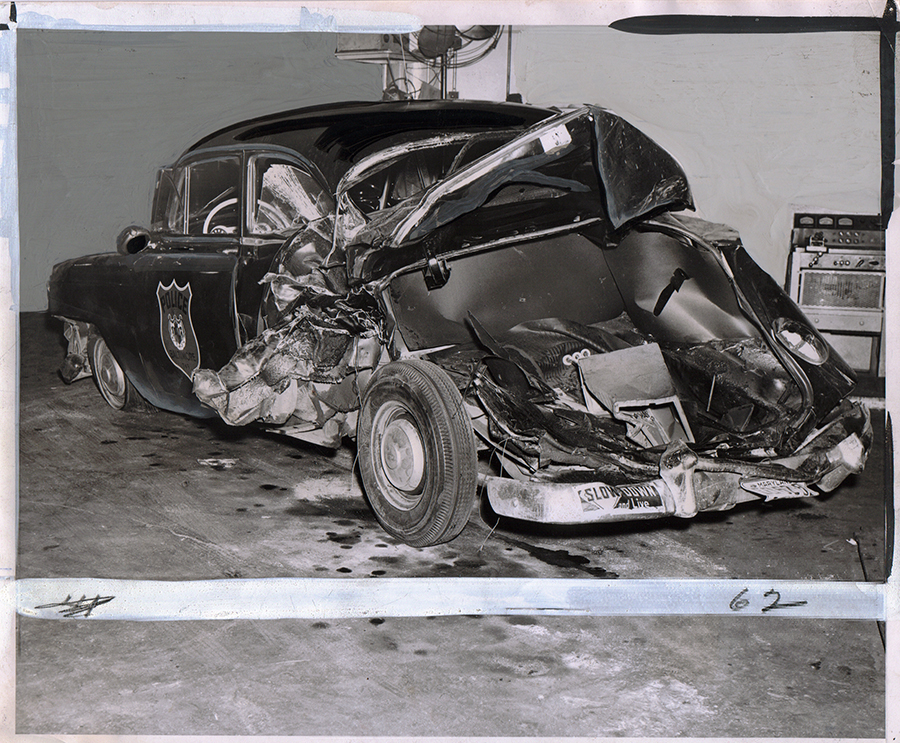
Baltimore Sun Collection

Baltimore Sun Collection
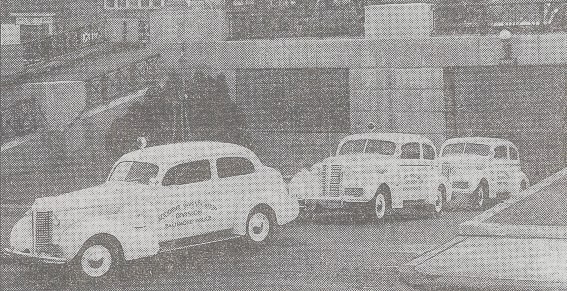
THE PATROL STARTS - The three crash cars leave the Police Building, two of them begin a day of duty The third cruises at night. The department wants seven more
Deny "Stop--Police" Machines Intended To Fool Motorists
First Mention of Emergency lights on vehicles
The Sun (1837-1989); Feb 25, 1938; pg. 22
Ten black police cars which can flash a “stop – police” sign when overtaking motorist have been operating on the streets of Baltimore since 27 January 1938 and have reported 1460 “moving violations” or an average of more than 54 tickets a day during that time.
Police officials were quick yesterday to deny a report that the new “black” machines or pulled out of a hat on a rainy night to the full motorist. Records produced by Capt. Henry Kaste, of the traffic division, showed that 48 arrests Wednesday night did not constitute an outstanding showing for the new cars.
They also objected to the idea that the new cars are black in color, as a disguise and that they carry truck tags for the same reason.
Inspector Hamilton R Atkinson said yesterday:
“Our job is to reduce the accident Rate in Baltimore, and we are trying to do it in a sane way. We do not want to persecute. If a citizen is doing the right thing, he does not have to fear the police.
“We know that reckless daredevils represent only 15%, of the motoring public, and we are trying to get them off of our city’s streets. The new cars have done more good than anything we’ve ever tried in the traffic division.
“They are doing excellent work. Why we have run across any number of drivers who admit that they have been getting away with violations for years, some say they have not been arrested in 25 years of driving. They say they have always looked for a motorcycle.
“Of course, the cars are black. We’re not disguising them. We don’t want a distinct color. The State Police use a khaki. That is their designated color. Ours is black.
“The only cars in the police department there any other color other crash squad vehicles, which are painted white.
“These cars have been on the street since 27th of January. Only in inclement weather, one motorcycle men are grounded to all 10 of them work. The officers are in full uniform.”
Plates are explained
Inspector Atkinson added:
“There using license plates of a series issued to trucks, and so are other privately owned pleasure cars because the Commissioner of Motor Vehicles Administration went out of regular pleasure car plates.
Signs on the hoods
“It is not a question, however, of piling up the arrests. These men are not sent out to make a certain number of arrest, but to stop reckless drivers and other violators.” The inspector said the new cars are engaged in general patrol as well as traffic work. The record of “moving violations” produced by Capt. Kaste did not include parking violations reported by the new machines. Speeding leads the list of charges.
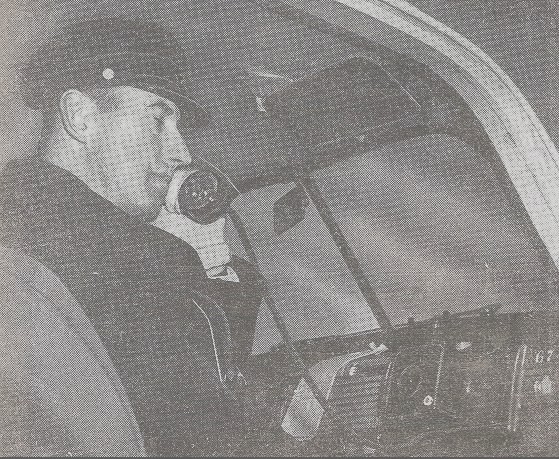
COURTESY OFFICER JAMES McCARTIN
ALARM
A crash, a radio call and Baltimore's new machinery for investigating traffic accidents goes into motion.
Officer Charles P. Trainor, of the Crash Squad, took this one.
COURTESY OFFICER JAMES McCARTIN
They can Fingerprint a Wreck
Seven Sciences Help Police Learn Who Hit What and Why
Crash Squad Officers Know Law, Bio-Chemistry, And Mathematics
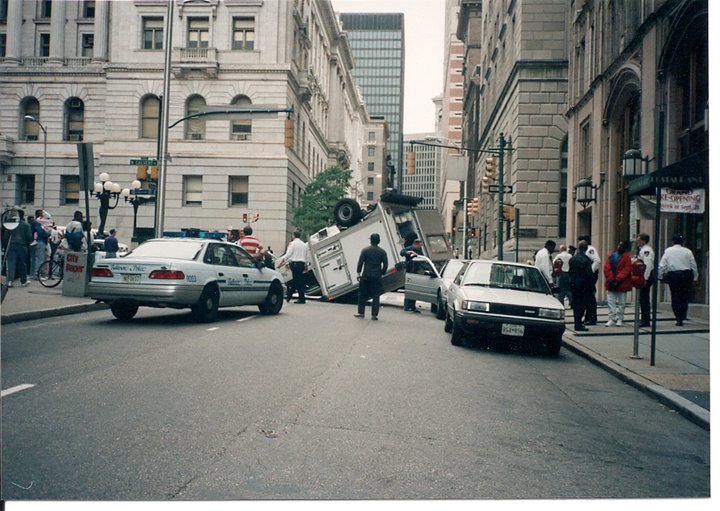
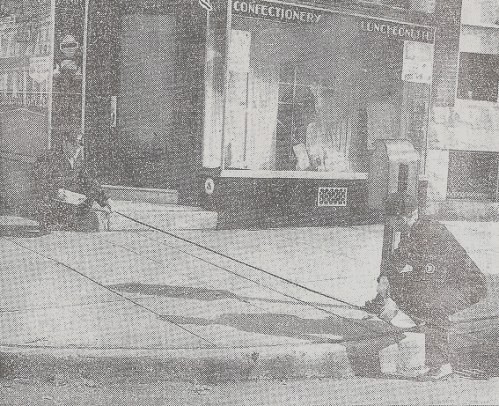
COURTESY OFFICER JAMES McCARTIN
Proof, Inch by Inch-- Officers Manson and Trainor measure the distance from the spot where a car jumped the curb to a window it smashed at Lafayette and Payson.
Wreck
Tracing responsibility for such wrecks as this was haphazard work a year ago. Today it is a science.
DRAWING
The officers learn something of an art as well as chemistry, mathematics, psychology, and medicine. Officer James H. Manson charts this diagram of an accident here.
THE FINISHING TOUCH-- Completing his investigation, Manson photographs the scene of the accident.

Tony Petralia started as a cadet on the Hot Desk in 1972. Within a month, he along with Jim Shelly, Retired Sergeant (now an R.N.) were sent to the FBI Training Academy for basic and Advanced latent fingerprinting. Upon their return to Baltimore, they were tasked with fingerprinting dead bodies at the morgue. When he turned 21 in 1974, he began Entrance Level Training then assigned to the Eastern District until he was transferred to CID in 1978. From there he went to T.I.S. in 1980. While in T.I.S., he attended many specialized schools. He was also in the first class of DRE's for the department in 1990. He retired in 1994. He then went to work for law firms reconstructing accidents. This became much more demanding than what he first thought. He didn't retire to work harder. In 2004 he enrolled in college full-time while working as a Court Security Officer at the Federal Court in Baltimore. As of this writing, he is one class, 3 credits from graduating with a B.S. degree in Administration of Criminal Justice.
His desire is to teach criminal justice at the Community College level.
LAW ENFORCEMENT EXPERIENCE UPDATE: 2010, Tony has received his BS degree. Good job Tony, we are all proud of you.
1972 - 1973 - Identification Section Police Cadet
1974 - 1978 - Eastern District Uniformed Patrol Officer
1978 - 1980 - Criminal Investigation Division Detective
Investigated Narcotics and Child Pornography matters. Performed Court-ordered electronic wiretaps.
1980 - 1994 - Special Operations Division Traffic Section, - Investigation Unit Investigate and reconstruct fatal and serious vehicular collisions. Provide causation analysis and place criminal charges. - Provide expert court testimony in both criminal and civil prosecutions.
1990 - 2000 - Accident Investigator-Re-constructionist - Investigate all matters pertaining to automobile accidents, workers compensation claims, medical malpractice claims and other miscellaneous matters. Interviewing and obtaining witness statements. On-site documenting of physical evidence and photography.
2000 - 2001 - Investigator Maryland Insurance Administration - Investigate all Property and Casualty matters pertaining to Insurance Agents licensed in the State of Maryland.
2002 - Present Court Security Officer Garmatz Federal Courthouse - Protect the general population, property, and family of the courthouse.
LAW ENFORCEMENT EDUCATION
1990 - U.S. Department of Transportation, Washington, DC - Drug Evaluation and Classification - National Certification as a Drug Recognition Expert
1990 - U.S. Department of Transportation, Washington, DC - Preliminary training in drug evaluation and classifications
1989 - 1990 - University of North Florida, Jacksonville, Florida - Commercial Vehicle Accident Investigations - 40-hour technical course in the investigation and reconstruction of commercial vehicle and articulated collisions
1990 - University of North Florida, Jacksonville, Florida - Motorcycle Accident Investigations - 40 technical courses in the investigation and reconstruction of motorcycle collisions
1988 - University of North Florida, Jacksonville, Florida - DWI Enforcement, NHTSA Approved - 40-hour course in advanced DWI enforcement techniques
1987 - University of North Florida, Jacksonville, Florida - Traffic Accident Reconstruction - 80-hour technical accident course. Required the reconstruction and preparation of detailed causation reports.
1985 - University of North Florida, Jacksonville, Florida - Advanced Accident Investigations - 80-hour course in all phases of advanced accident investigations.
1985 - University of North Florida, Jacksonville, Florida - DWI Instructors Course - Horizontal Gaze Nystagmus Certified
The 40-hour course in the identification of intoxicated drivers and the effects of alcohol impairment in the body. National certification as an Instructor in Horizontal Gaze Nystagmus
1984 - University of Maryland, College Park, Maryland - Vehicular Homicide/ DWI Conference
1973 - Federal Bureau of Investigation - Advanced Latent Fingerprint Techniques - 40-hour course
1973 - Federal Bureau of Investigation - Fingerprint Classification - College Education 2004-present Mountain State University, Beckley, West Virginia - Enrolled full-time in their B.S. Program for a degree in Administration of Criminal Justice - 2010 Tony has received his BS degree. Congratulations Tony on a job well done.

BALTIMORE POLICE PHOTO COURTESY OFFICER TONY PETRALIA
Signal 31
This photo depicts the bond between public safety and nurses. This nurse was on her way home from Hopkins and stopped to help the boy who had been struck. Tony Petralia says "This is my favorite picture."
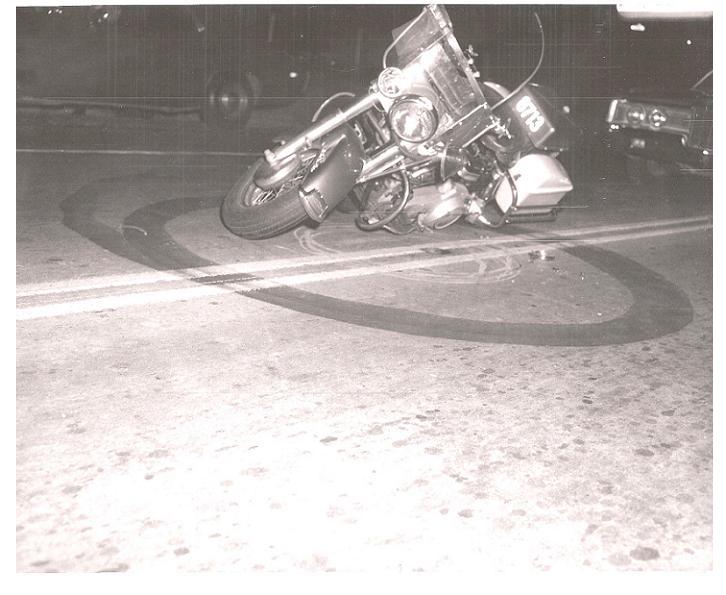
BALTIMORE POLICE PHOTO COURTESY OFFICER TONY PETRALIA
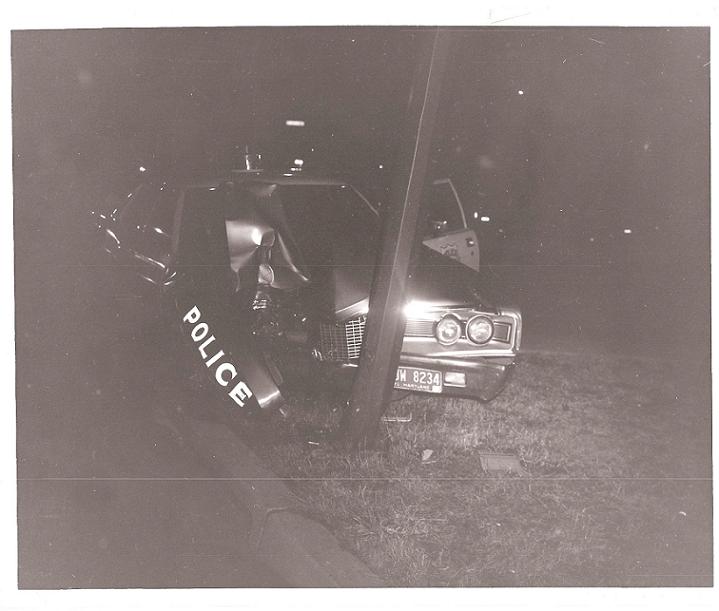
BALTIMORE POLICE PHOTO COURTESY OFFICER TONY PETRALIA
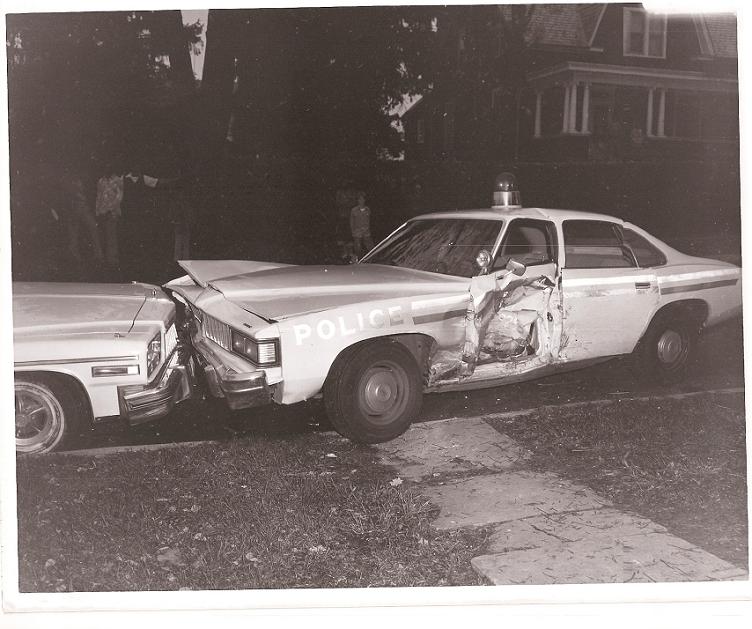
BALTIMORE POLICE PHOTO COURTESY OFFICER TONY PETRALIA

BALTIMORE POLICE PHOTO COURTESY OFFICER TONY PETRALIA
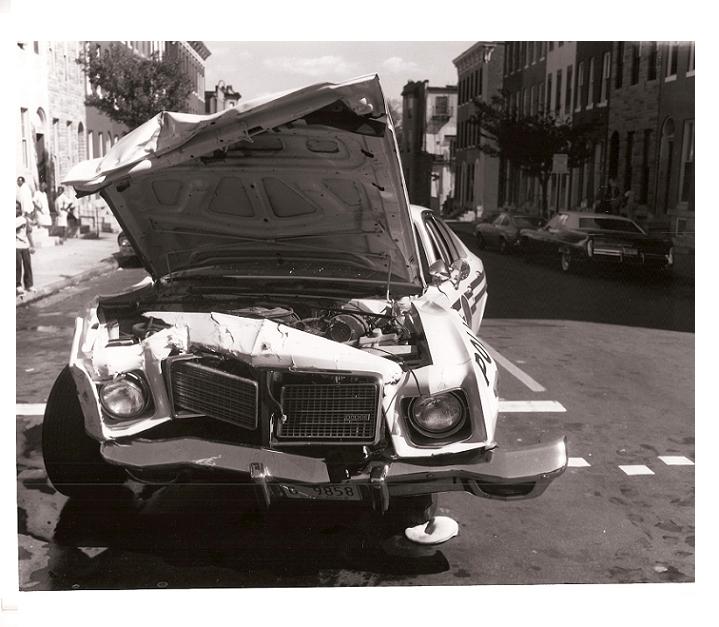
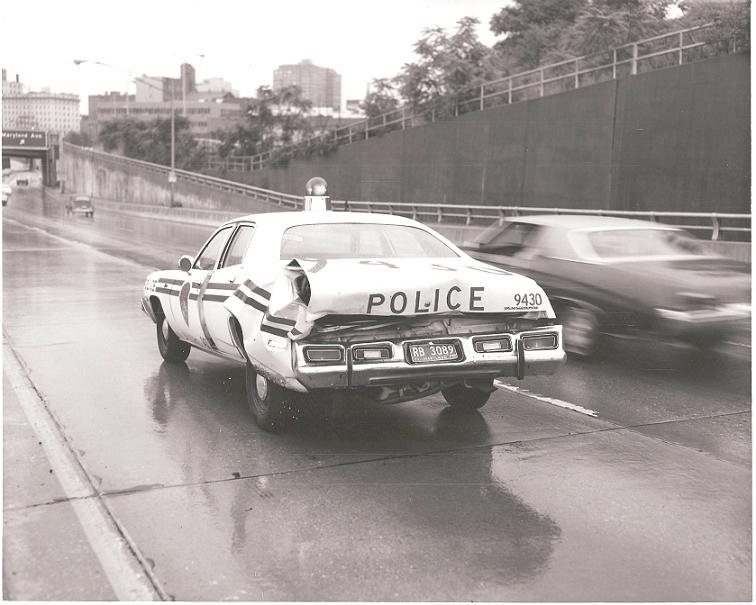
BALTIMORE POLICE PHOTO COURTESY OFFICER TONY PETRALIA
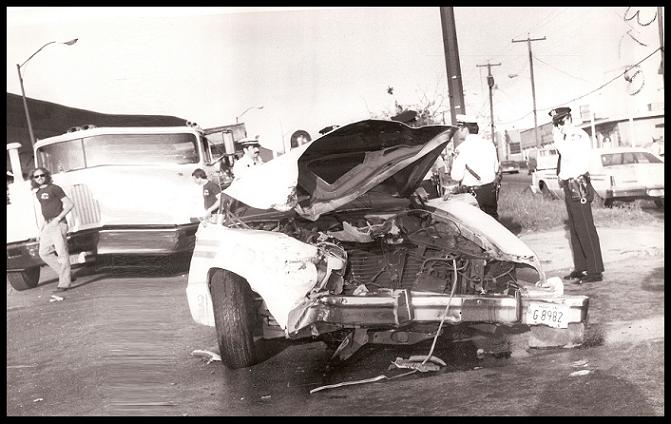
BALTIMORE POLICE PHOTO COURTESY OFFICER TONY PETRALIA
Signal 31
Departmental accident at the intersection of Monument Street and Kresson. Officer Lauren Wilson (now Sgt.) was seriously hurt. It occurred in Aug 1981

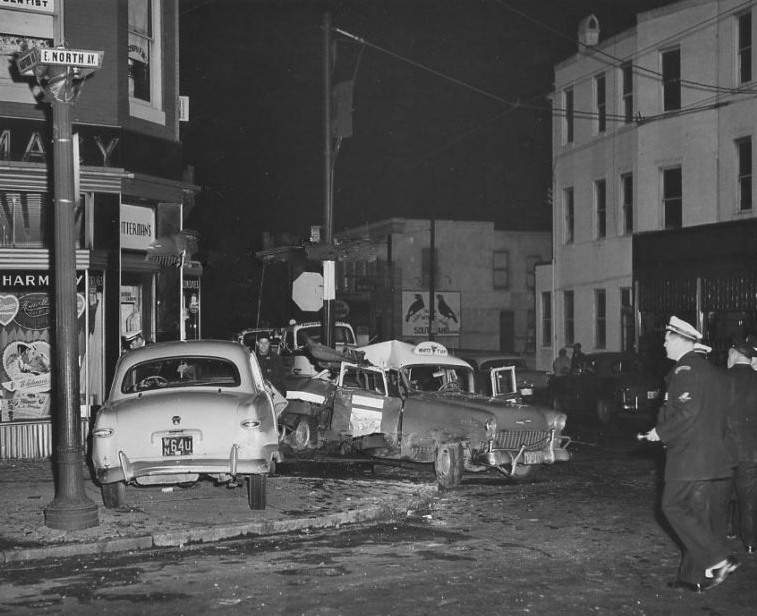
Baltimore Sun Collection
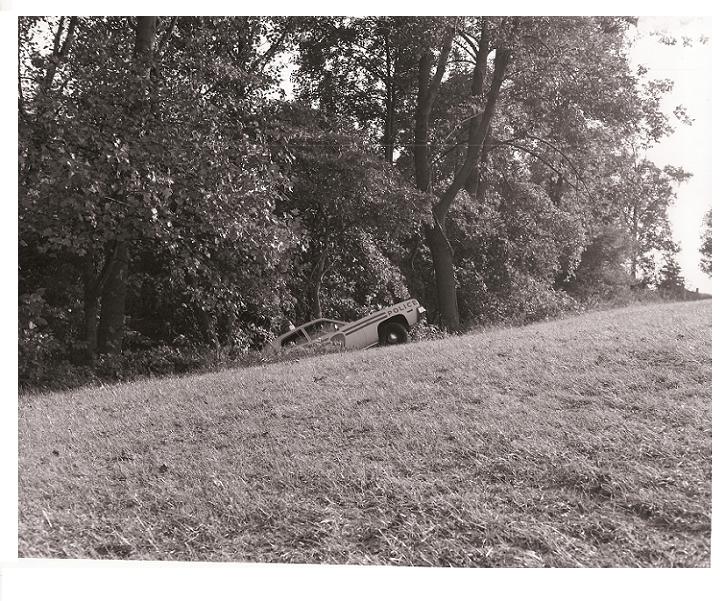
BALTIMORE POLICE PHOTO COURTESY OFFICER TONY PETRALIA

BALTIMORE POLICE PHOTO COURTESY OFFICER TONY PETRALIA
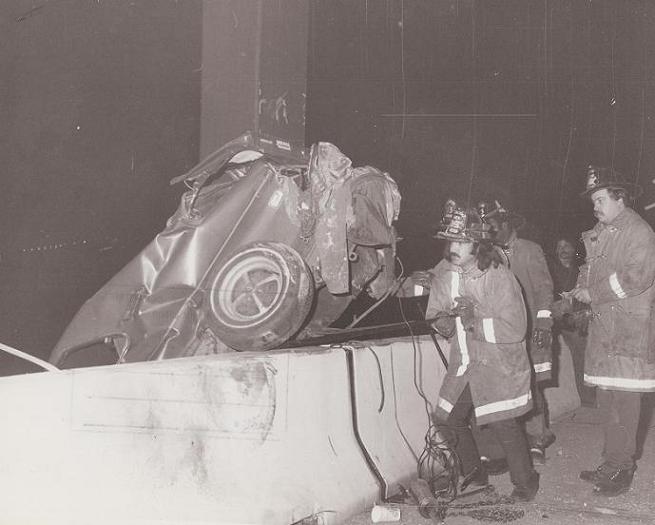
BALTIMORE POLICE PHOTO COURTESY OFFICER TONY PETRALIA
Signal 32
I-95 SB All that kept the car on the bridge was the bumper. The driver was ejected from the vehicle and DOA below the bridge

BALTIMORE POLICE PHOTO COURTESY OFFICER TONY PETRALIA
<<<< WARNING >>>>
The following photographs are very graphic and may be disturbing to some. The photographs displayed, go to show the high demands and stress put on Police Officers who must work these accident scenes every day as a matter of duty.
The photos are of FATAL AND SERIOUS PERSONAL INJURY ACCIDENTS





BALTIMORE POLICE PHOTO COURTESY TONY PETRALIA
Signal 32
1983 accident on I-95. The drunk driver still wearing his security guard uniform was N/B on the S/B side of I-95. This occurred on the I-95 portion between Caton Ave. and I-395
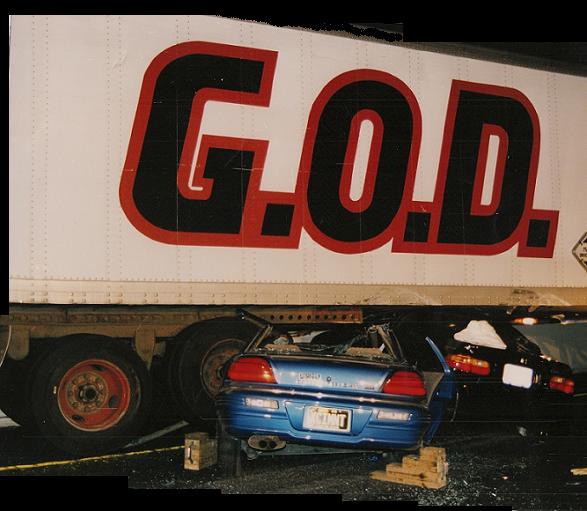
BALTIMORE POLICE PHOTO COURTESY TONY PETRALIA
Signal 31
Vehicles pinned under "GOD" truck

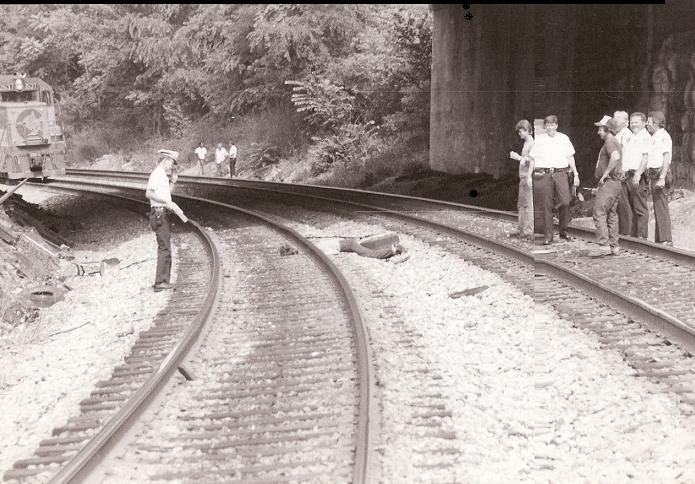
BALTIMORE POLICE PHOTO COURTESY OFFICER TONY PETRALIA
Signal 32 Suicide with a train
Under the bridge at Edison Hwy at Sinclair Lane. The deceased escaped from hospital custody that morning. The officer walking towards the camera is Sergeant Michael Harding, the one with gray hair in the background is Officer Charles Klein. The officer looking towards the camera with the glasses is Officer Neil Sewell, next to him is Officer Timothy Murray. The Officer taking pictures is Officer Tony Petralia. (Information from Officer Charles Klein)

BALTIMORE POLICE PHOTO COURTESY OFFICER TONY PETRALIA
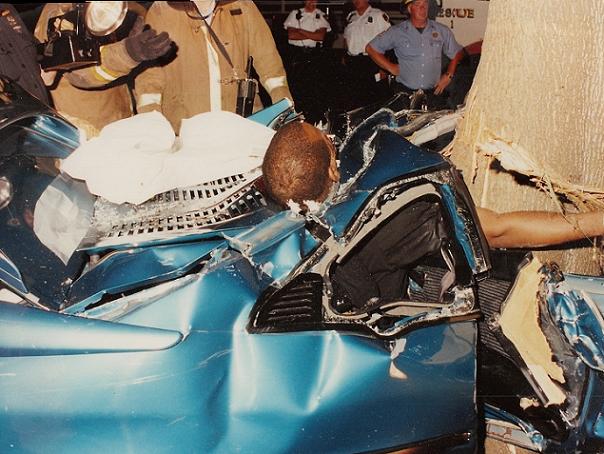
BALTIMORE POLICE PHOTO COURTESY OFFICER TONY PETRALIA
Signal 32
This accident on Rogers Ave in a 25 MPH zone.
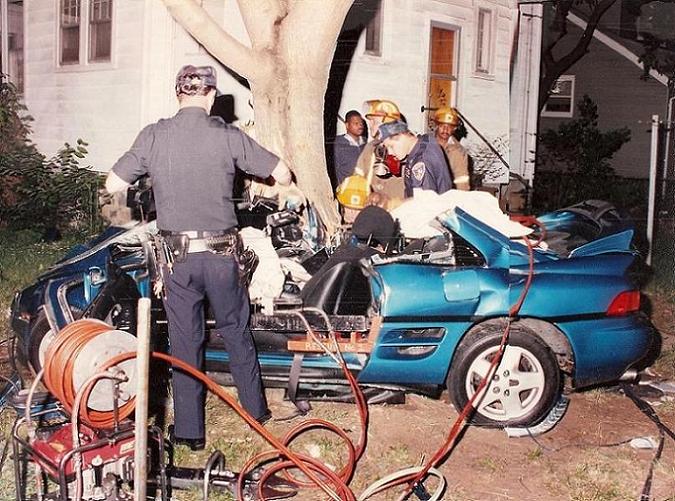
BALTIMORE POLICE PHOTO COURTESY OFFICER TONY PETRALIA
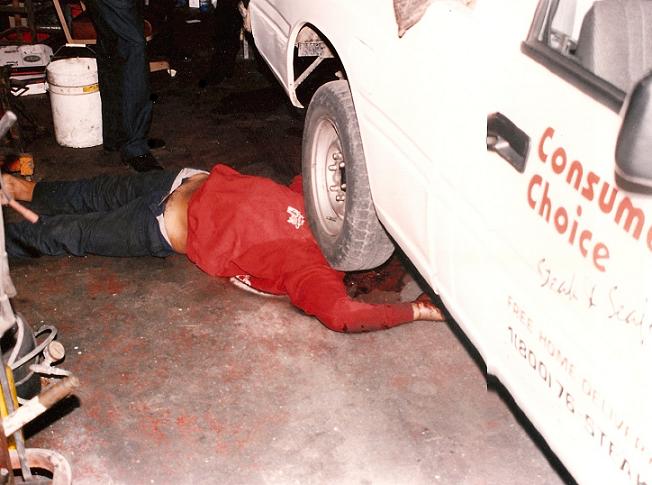
BALTIMORE POLICE PHOTO COURTESY OFFICER TONY PETRALIA
Homicide
Call received on Reisterstown Road, NWD to investigate a signal 32. I believe it is obvious this is not an accident. We later learned that this was the result of a gambling debt. They held him under the tire and released the jack on his head when he couldn't pay his debt
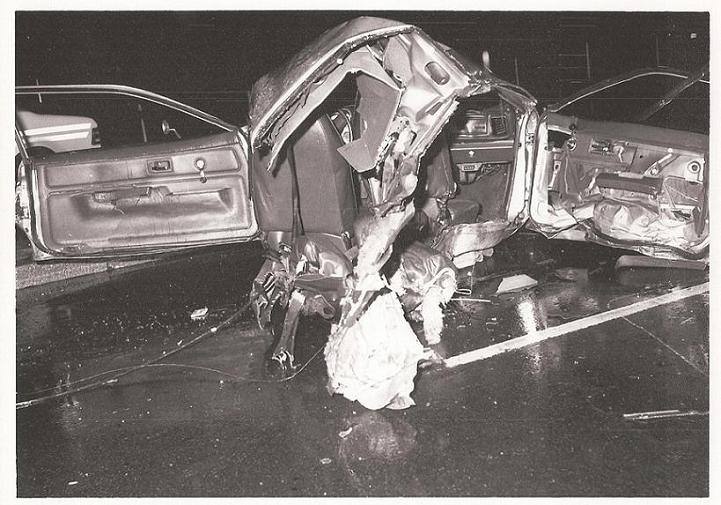
BALTIMORE POLICE PHOTO COURTESY OFFICER TONY PETRALIA
Signal 32
Fatal that occurred on Erdman Avenue. Since this occurred in a 35 MPH zone speed might have been
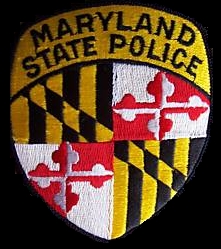
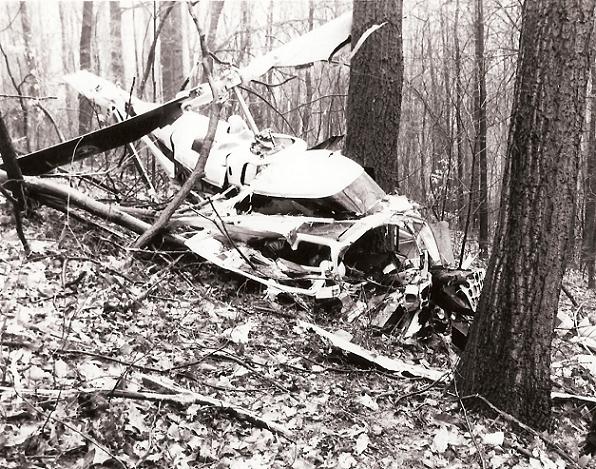
BALTIMORE POLICE PHOTO COURTESY OFFICER TONY PETRALIA
Signal 32 AIRCRAFT ACCIDENT
Maryland State Police Helicopter Fatal Crash Jan.19, 1986 Leakin Park, Cpl. May and TFC Poetzman were returning to Frederick when they encountered heavy fog and attempted to return to Shock Trauma. Two troopers who lost their lives for doing what they did best…Saving the lives of others. Very traumatic scene involving fellow Law Enforcement Officers
BALTIMORE POLICE PHOTO COURTESY OFFICER TONY PETRALIA
Signal 32 Departmental Tragically involving one of our own
Officer Robert Alexander was killed Sep.20,1986 while in the process of pushing several citizens out of the way of the Nissan truck at North Bend at Frederick Rd. Extremely trying time when it involves one of your own. Officer Alexander died a true Professional Hero, placing his own life above those of innocent citizens. He never knew that this day, he would be called to make the “Ultimate Sacrifice” Be reminded that traffic accidents are causing the most extreme dangers to our officers today. Let this tragedy serve as an inspiration to us all of just how dangerous Police work can be.

COURTESY RETIRED SERGEANT NICK CAPRINO
Tony Petralia
POLICE INFORMATION


